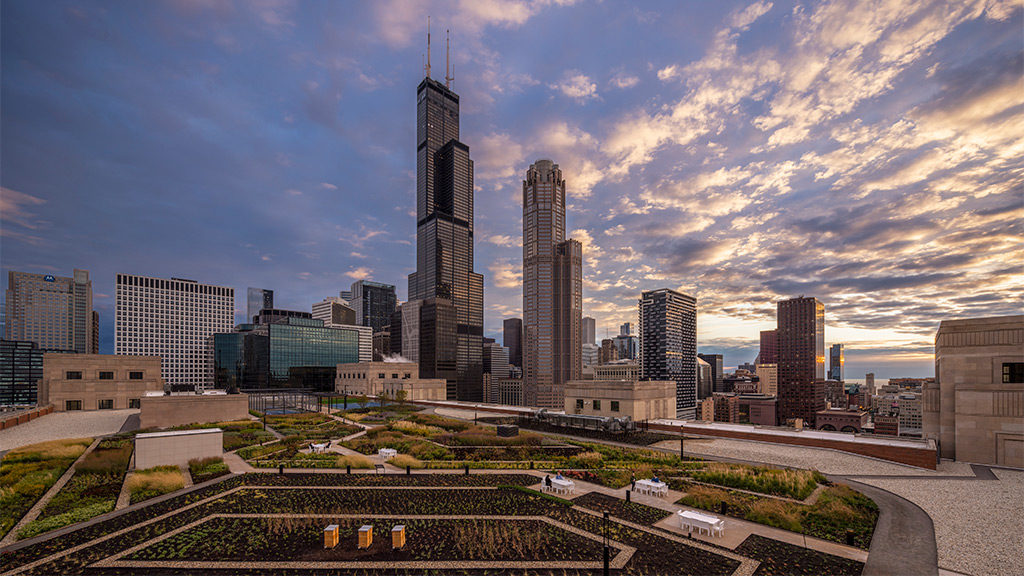Accelerating Momentum Around Climate Action With Every Person, Every Project, and Every Place
February 02, 2021 | By Rives Taylor, Gail Napell
Last week was a pivotal moment in the fight against climate change. President Biden signed numerous executive orders to address the climate, including having the U.S. rejoin the Paris Agreement, pause new oil and gas leases on public lands, and called on federal agencies to purchase electric vehicles.
Major corporations were also more vocal. Even though momentum has been building over the past four years, some companies decided to draft off the government’s lead and make announcements of their own. Blackrock CEO Larry Fink made his now annual announcement that he expects the companies they do business with to have a detailed plan for how they intend to meet the “net-zero economy” specified in the Paris Agreement. Blackrock’s $9 trillion investment fund ensures businesses are listening. To wit, GM announced that by 2035 it will no longer manufacture gasoline-powered cars and SUVs.
The message is clear: Now is the time for a global, coordinated action on climate change.
As designers, builders, and creators of the built environment, we at Gensler are committed to leading the charge by ensuring that every project in our portfolio is net zero carbon by 2030. That commitment is not new. In 2015, we committed to the Paris Pledge in Copenhagen and in 2019, we launched our Gensler Cities Climate Challenge (GC3) at the U.N.’s Climate Action Summit in New York to help bring the entire building industry along with us. We have stayed focused since then.
The difference now is that there’s new urgency, spurred on by the pandemic. COVID-19 has shown us how the natural world can impose devastating consequences on the global economy. We know the time to reexpress, reenliven, and repromote our commitment is now.
To achieve our ambitious goals, Gensler is transforming our business in myriad ways to meet this challenge and opportunity. We’ve adopted a new mantra for our commitment to sustainability and resilience within our practice — "Every Person, Every Project, Every Place" — to ensure that our commitment to resilience is embedded across the firm at every level. In the coming months, we’ll be releasing the next iteration of our yearly Impact by Design report, in which we track our year-over-year progress toward reducing the carbon impact of our portfolio, and document the ways we’re working within our business — in a lifecycle partnership with our clients and communities — to advance the goals of sustainable and resilient design and operations.
Our commitment begins with a core set of beliefs and behaviors in line with a more resilient future, and it extends to specific initiatives. As we look to 2021, here are the five strategies that guide our approach:
Reusing an existing building or interior space is almost invariably better for the environment than tearing one down and building new; and the same is true for saving an office chair or reusing other materials. We commit to prioritizing materials and building reuse in our projects whenever possible.
2. Build only as much as you need.Smaller buildings and spaces use less materials to create, and less energy and resources to operate and maintain. We commit to working with our clients to pursue right-sizing and efficiency strategies — of course, balancing this with a continued focus on creating places that offer a great experience for people.
3. Use low impact, low-carbon materials.The new materials, furniture, and fixtures we specify on a daily basis each come with an environmental and carbon cost — but those costs are far from equal. We commit to prioritizing low-impact materials across our projects, and to continuing to invest in new methods and resources to help understand the embodied carbon impact of materials.
4. Pursue efficiency strategies from day one.The biggest impact that can be made on any project is at the beginning — from sourcing locally, prioritizing passive design strategies, to building performance and efficiency targets into projects from the outset, we commit to prioritizing energy and resource efficiency at scale, with a goal of net zero across our portfolio by 2030.
5. Work with climate and context.Operationally net zero or net positive projects are just the start — ultimately, the most sustainable and resilient design solutions are those that work with local climate and context, creating economic, social, and environmental resilience — and increasing longevity through adaptable and flexible solutions. We commit to understanding and designing to local climate and cultural conditions impact on the lifecycle operations across all our projects.
These commitments aren’t taken lightly — and the change we need won’t happen overnight. But this time feels different, and this time feels right. We look forward to working together with our clients and communities to meet this moment.

